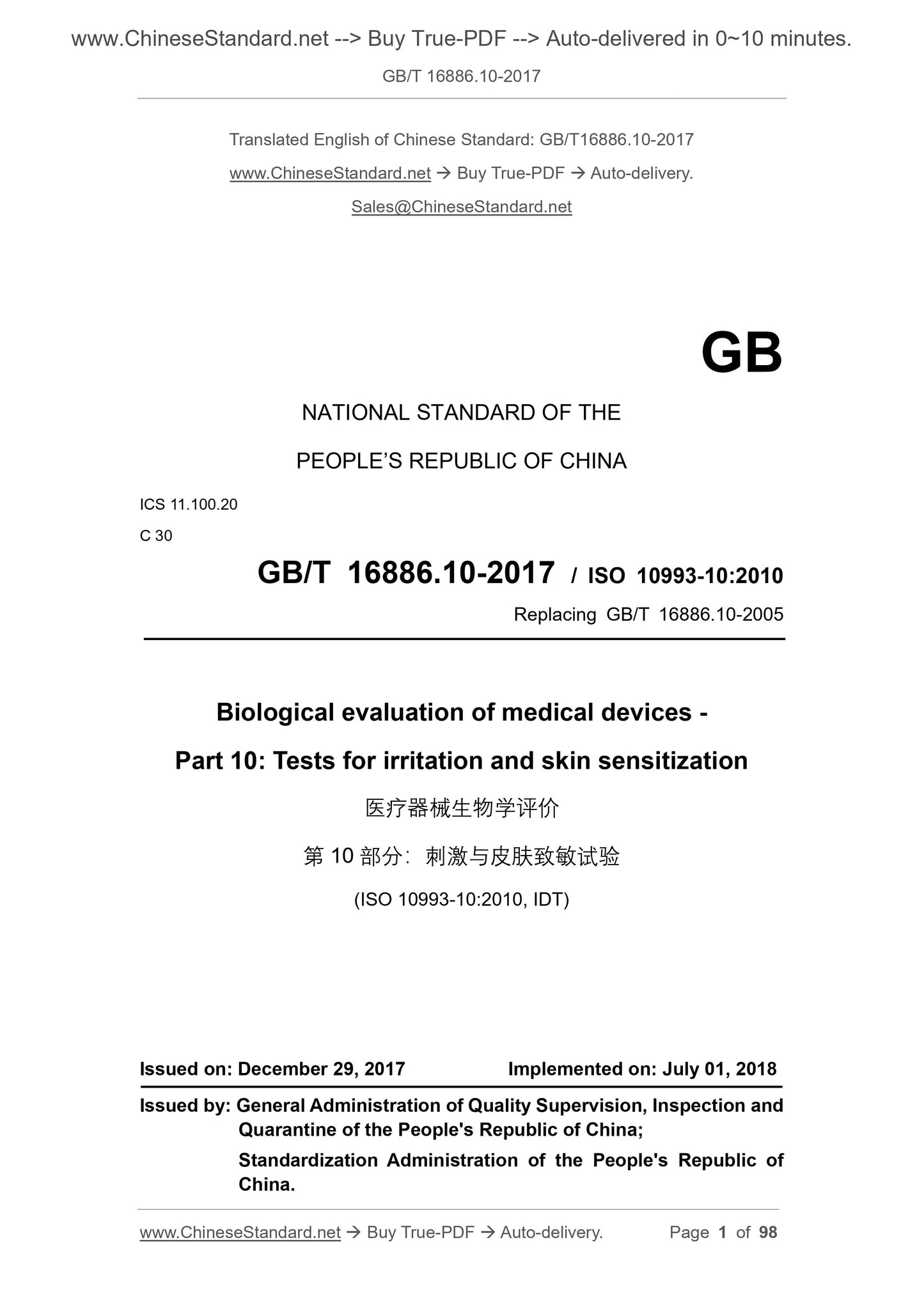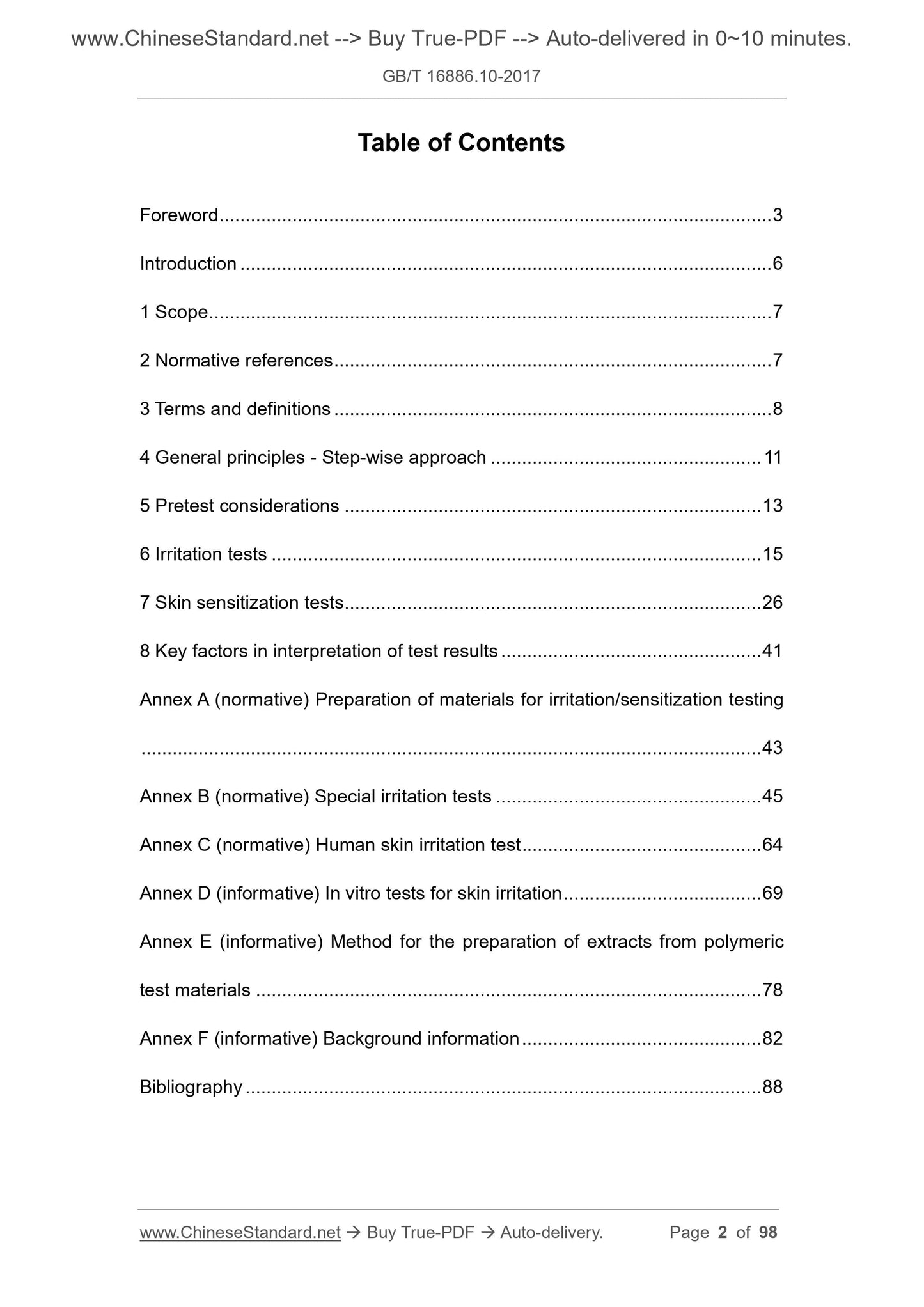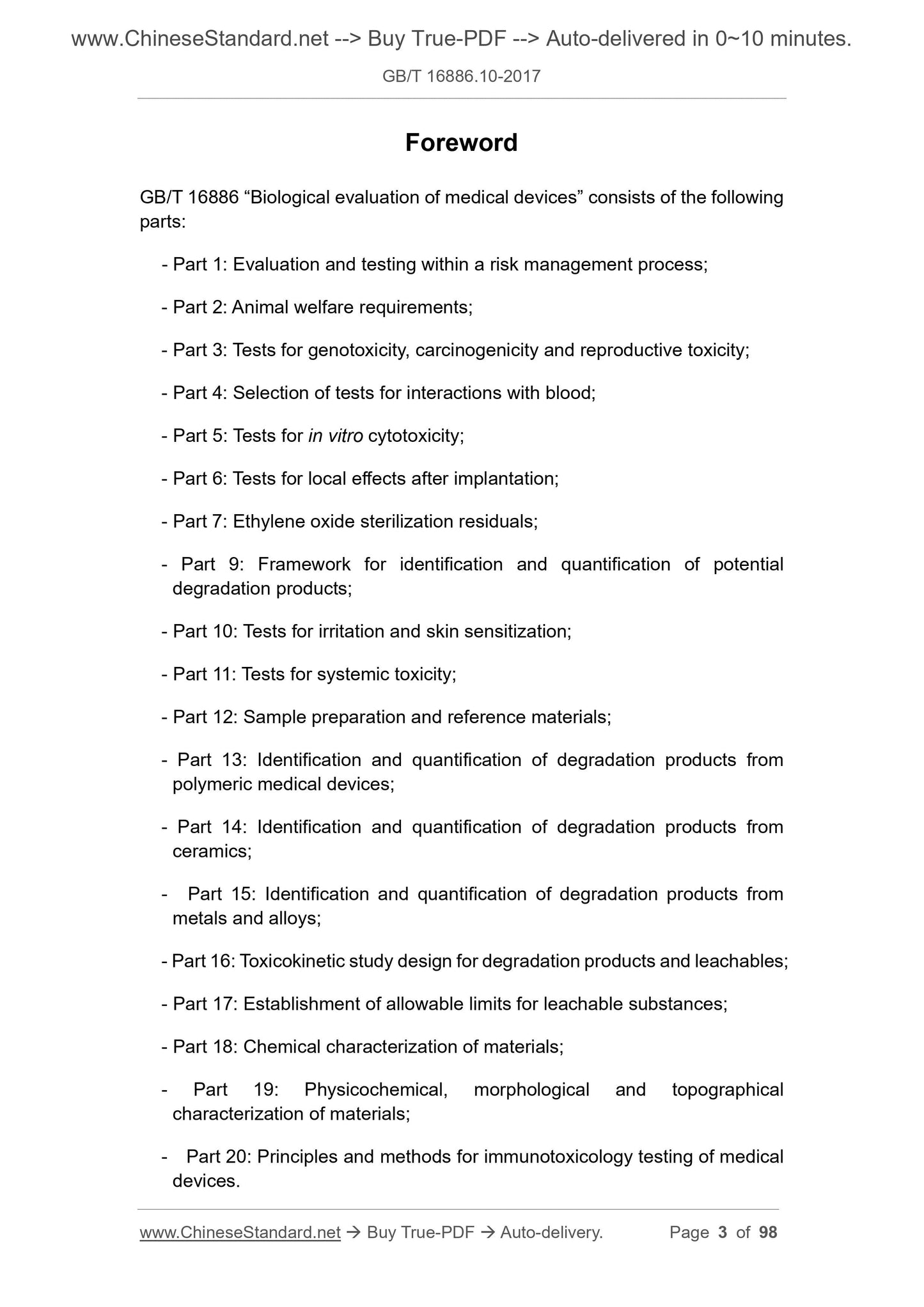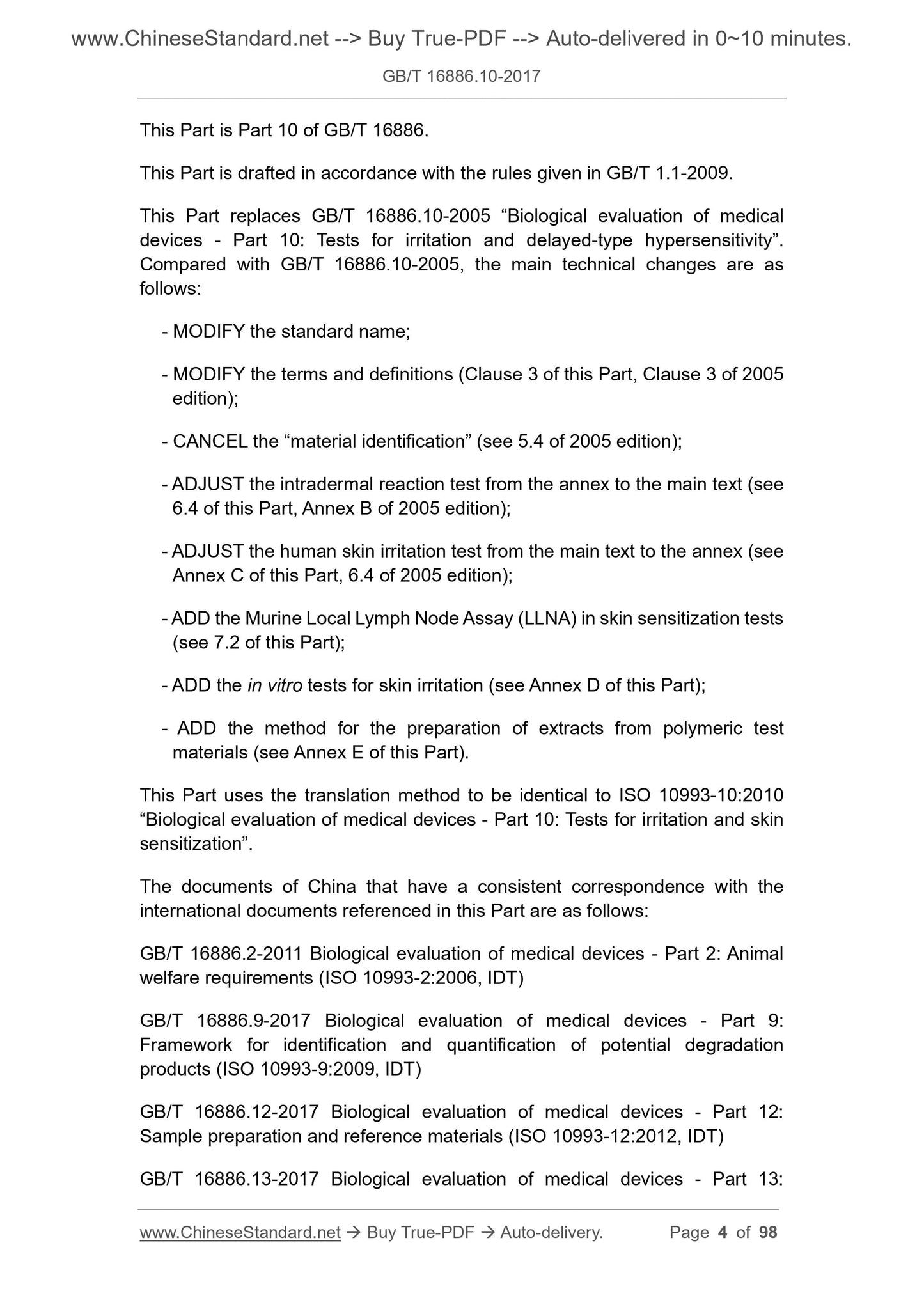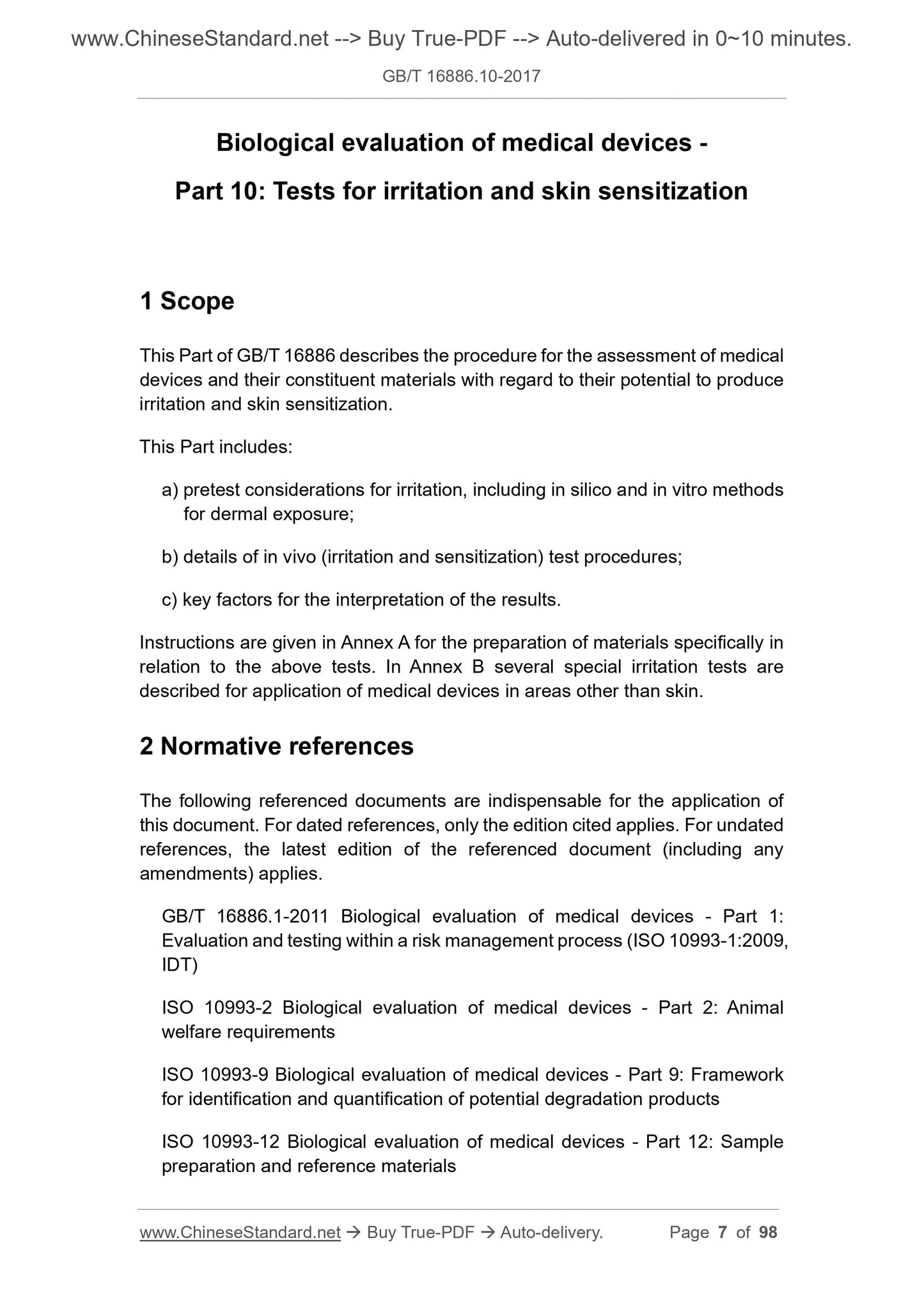1
/
of
5
PayPal, credit cards. Download editable-PDF and invoice in 1 second!
GB/T 16886.10-2017 English PDF (GB/T16886.10-2017)
GB/T 16886.10-2017 English PDF (GB/T16886.10-2017)
Regular price
$805.00
Regular price
Sale price
$805.00
Unit price
/
per
Shipping calculated at checkout.
Couldn't load pickup availability
GB/T 16886.10-2017: Biological evaluation of medical devices -- Part 10: Tests for irritation and skin sensitization
Delivery: 9 seconds. Download (and Email) true-PDF + Invoice.Get Quotation: Click GB/T 16886.10-2017 (Self-service in 1-minute)
Newer / historical versions: GB/T 16886.10-2017
Preview True-PDF
Scope
This part of GB/T 16886 describes the evaluation steps for potential stimulation and skin sensitization of medical devices and their constituent materials.This section includes.
a) pre-stimulation considerations, including bio-simulation experiments and in vitro methods for skin contact;
b) detailed in vivo (stimulation and sensitization) test procedures;
c) Key factors for interpretation of the results.
Appendix A gives specific material preparation instructions related to the above tests. Appendix B gives the skin removal unit for medical devices.
Several special stimulation tests outside the position.
Basic Data
| Standard ID | GB/T 16886.10-2017 (GB/T16886.10-2017) |
| Description (Translated English) | Biological evaluation of medical devices -- Part 10: Tests for irritation and skin sensitization |
| Sector / Industry | National Standard (Recommended) |
| Classification of Chinese Standard | C30 |
| Classification of International Standard | 11.100.20 |
| Word Count Estimation | 62,654 |
| Date of Issue | 2017-12-29 |
| Date of Implementation | 2018-07-01 |
| Issuing agency(ies) | General Administration of Quality Supervision, Inspection and Quarantine of the People's Republic of China, Standardization Administration of the People's Republic of China |
Share
